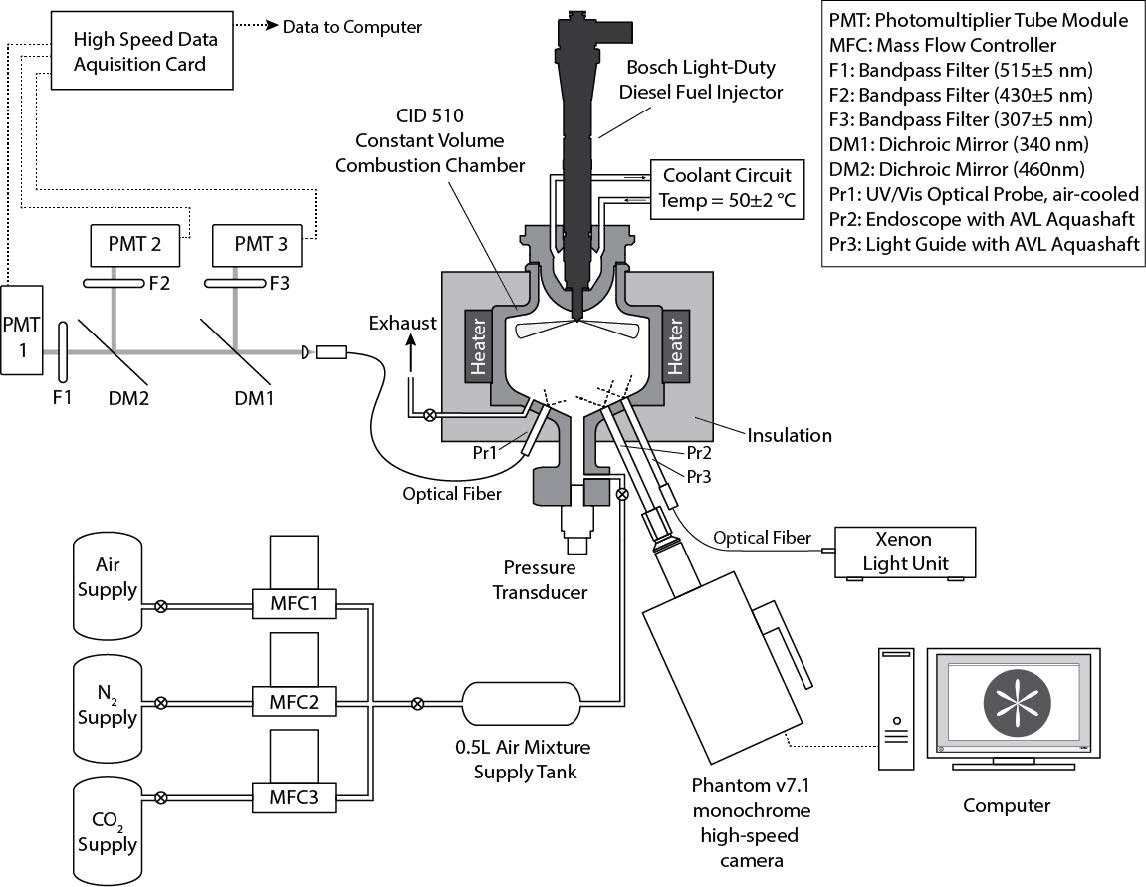Intelligent Power Systems
Annual PlanReaction Pathway and Elementary Ignition Behavior of Surrogates for JP-8 and Alternative JP-8 Fuels
Project Team
Government
Eric Sattler, U.S. Army TARDEC
Faculty
Angela Violi, Jason Martz, University of Michigan
Industry
Peter Attema, Detroit Diesel - Daimler Trucks North America
Student
Dongil Kang, University of Michigan
Project Summary
Project began in 2013 and was completed by 2016.

Interaction between fuel chemistry and engine combustion system behavior was investigated in a manner that is directly relevant to practical engine configurations and the JP-8 fuels upon which the U.S. Army relies. To achieve truly predictive simulation of engine performance on JP-8 and diesel fuels, chemical reaction kinetics for the combustion of the fuel must be developed and validated. The practical simulation of the diesel combustion process requires the use of simplified (reduced) chemical kinetic models and the consideration of model compounds or mixtures of model compounds (referred to as “surrogate” fuels).
ARC research has been actively pursuing the development of a comprehensive JP-8 surrogate for heavy-duty compression ignition engine combustion. This work focused on a detailed examination of that surrogate fuel, in comparison with practical JP-8 fuels, in a novel experimental system for assessing the reaction pathways and critical ignition phenomena. This information was intended to provide additional validation of the JP-8 surrogate fuel being developed by Violi and co-workers. This project involved close collaboration with the Violi group on the surrogate fuel formulation, experimental conditions and application of these novel measurements. The measurements provided an intermediate step to validate simulations based upon the surrogate fuel representation of JP-8 and the kinetic models to describe its combustion.
The research objectives of the project were to provide validation experiments to compare the elementary ignition behavior, focusing on the chemical portion of the ignition delay, of the surrogate fuel formulations proposed by Violi and co-workers in comparison with practical JP-8 fuels. A secondary objective was to provide ignition data from a more elementary apparatus for comparison to chemical kinetic modeling calculations. In this manner, there were detailed experimental comparison of ignition behavior (critical compression ratio, critical equivalence ratio, % low temperature heat release) between the surrogate fuels and practical JP-8 fuels. Also, there were comparisons between the chemical kinetics models for the surrogate fuels and these experimental observations through 0-D ignition simulation.
Publications:
- Kang, D., D. Kim, K. H. Yoo, A. Violi, A. Boehman, The effect of molecular structures of alkylbenzenes on ignition characteristics of binary n-heptane blends, Proceedings of the Combustion Institute, 37(4), 4681-4689 (2019).
- Kang, D., V. Kalaskar, D. Kim, J. Martz, A. Violi, A. Boehman. Experimental characterization of jet fuels under engine relevant conditions – Part 1: Effect of chemical composition on autoignition of conventional and alternative jet fuels, Fuel, 239, 1388-1404 (2019).
- Kang, D., D. Kim, V. Kalaskar, A. Violi, A. Boehman. Experimental characterization of jet fuels under engine relevant conditions – Part 2: Insights on optimization approach for surrogate formulation, Fuel, 239, 1405-1416 (2019).
- Kang, D., V. Kalaskar, D. Kim, J. Martz, A. Violi, A. Boehman. Experimental Study of Autoignition Characteristics of Jet-A Surrogates and their Validation in a Motored Engine and a Constant-Volume Combustion Chamber. Fuel, 184, 565-580 (2016).

